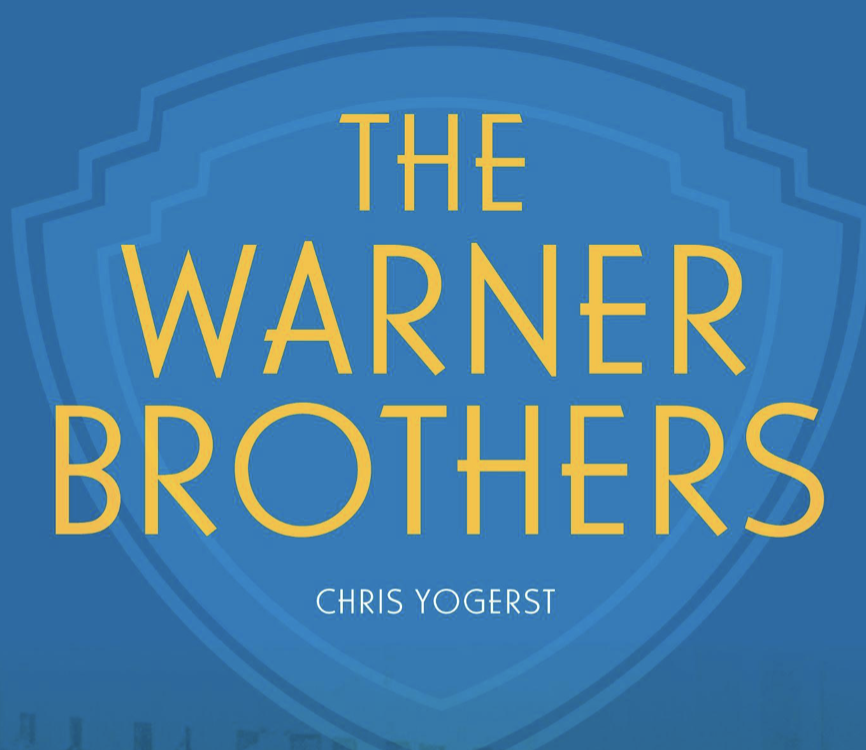Those who grew up watching Animaniacs on Saturday mornings could hardly be blamed for thinking that the Warner Brothers were a trio of cartoon siblings (including one sister) that ran amuck on the Warner movie lot before being locked up in the iconic Warner water tower. But there were in fact four human brothers that formed what has become one of the greatest film empires in the world. Their story is chronicled in author Chris Yogerst’s latest volume, aptly and simply titled The Warner Brothers.
The Wonsals were a family of Ashkenazi Jews who fled anti-Jewish violence in Poland for a better life in North America like so many other immigrants in the late Victorian era. Changing their family name to the more anglo-friendly “Warner”, parents Benjamin and Pearl moved their sons Harry (b. 1881), Albert (b. 1884), and Sam (b. 1887) to the United States in 1889. They moved around the continent a bit (including Ontario where infamous younger brother Jack was born in 1892) before finally settling in Ohio.
Harry was the financial brains of the growing family and tried his own (and his brother’s) hands at various ventures including a grocery store, bicycle repair shop, and even a bowling alley! But destiny had different plans for them and it came in the form of a rapidly growing new and exciting artform: cinema.
Of course, cinema in those days tended to consist of filmed stage acts and exotic locations, but audiences in the early 20th century couldn’t get enough of these new-fangled moving pictures and the four brothers soon found themselves operating The Cascade, a humble movie house in New Castle, Pennsylvania. It was a bit of a ramshackle operation at first as they even had to borrow seats from a nearby funeral parlour! But they prospered nonetheless and before long, the brothers moved to where the real money lay: film production.
Starting with their first film in 1912, the brothers worked through various ventures before finally forming Warner Brothers Pictures as we know it in 1923 (Happy 100th!). Harry was president, Sam and Jack were co-heads of production and the publicity-adverse Albert rounded out the quartet as treasurer and head of distribution. Considered a small fish in a large pond at inception, the Warners broke through the public consciousness with their bold experiment in synchronised soundtracks, first with score and sound effects in Don Juan (1926) and more famously with The Jazz Singer (1927).
From there, the Warners plunged into stories that were ripped from the headlines and boiling over with social realism including gangster-films Little Caesar and The Public Enemy (both 1931) as well as social-issue films like I Am a Fugitive from a Chain Gang (1932) that pushed censorship boundaries and thumbed its nose at the idea that films should only be for entertainment (“Messages are for Western Union” independent producer Samuel Golwyn supposedly quipped).
It wasn’t all grit and noir on the Burbank lot however. Warners also mounted large colourful epics like the timeless The Adventures of Robin Hood (1938) and of course couldn’t resist a musical or two like 42nd Street (1933) or the Gold Diggers series. And who could forget the legendary Looney Tunes antics of Bugs Bunny and friends who introduced most of us to the WB in the first place? (The Warners could, apparently. Half the time, they forgot that Leon Schlesinger and his animators were even on the lot!)
Yogerst has woven a rich tapestry that yields ample insight into the formation and running of the Warner Brothers empire while keeping the brothers themselves at its centre. The complex human quality of the men profiled here always shines through and the volume reads like thrilling epic miniseries. In fact, why haven’t they produced one yet? I personally nominate Bradley Cooper to play Jack.
There is success (Yankee Doodle Dandy, Rebel Without a Cause, My Fair Lady), troubled waters (Hollywood Blacklist, the crumbling of the studio system), loss (Sam Warner’s untimely death at age 40), and betrayal (Jack taking over the studio behind his brothers’ back). All the ingredients to make a non-fiction volume as compelling to read as the most thrilling fictional one. Backed by expert prose and exhaustively annotated research this is another winning tome of film history from University Press of Kentucky.
Near the end of the book, Yogerst quotes an elderly Jack lamenting that “A definitive, honest and complete book on the Warner Brothers and their times has yet to be written”. I have little doubt that Jack would have ultimately approved of this volume, especially since he ends up being the lead character, just how he would have wanted it. It’s a great way to celebrate Warner Bros 100th Anniversary before firing up Casablanca and the Looney Tunes again. Highly recommended.
9/10
The Warner Brothers is available where all fine books are sold including Amazon.

